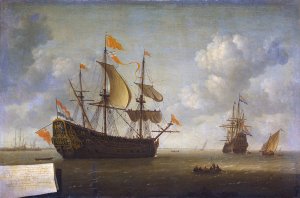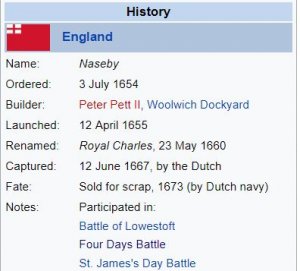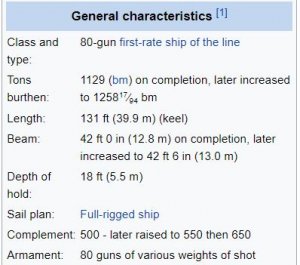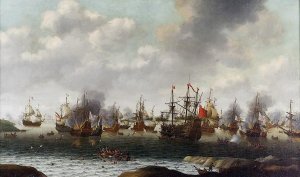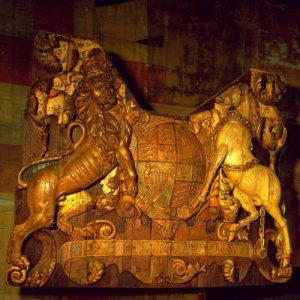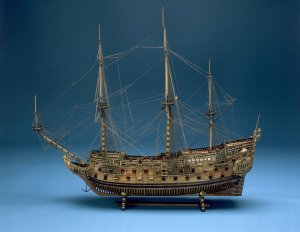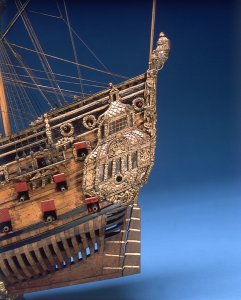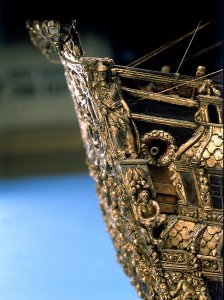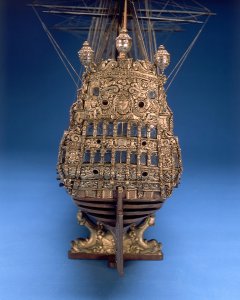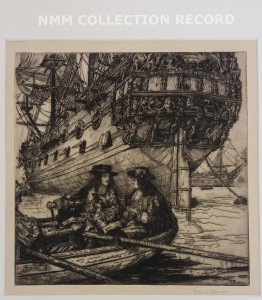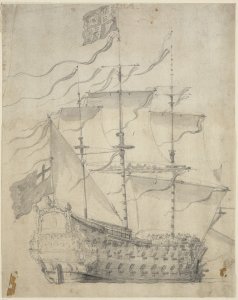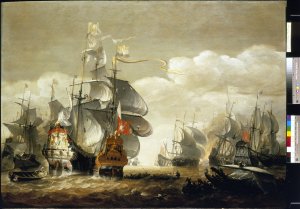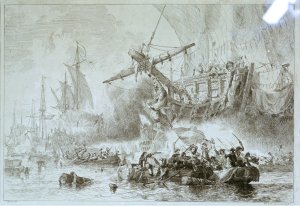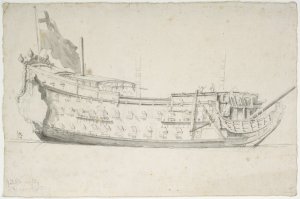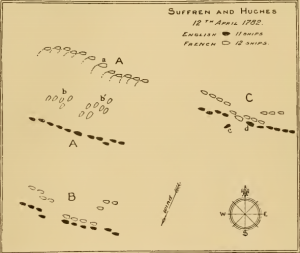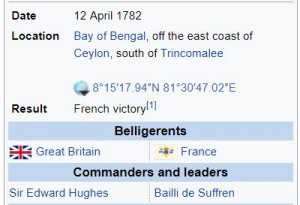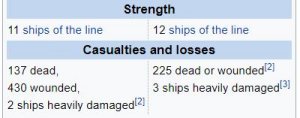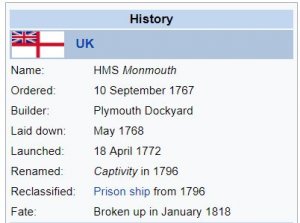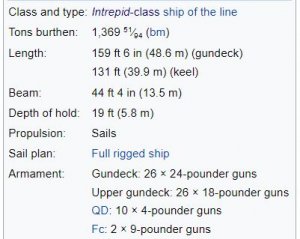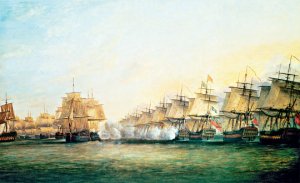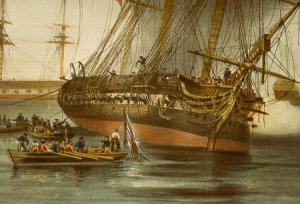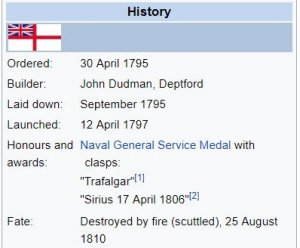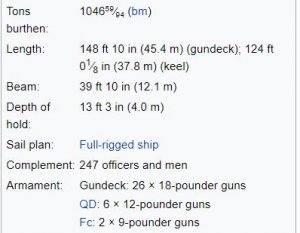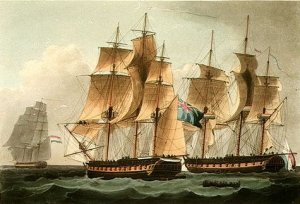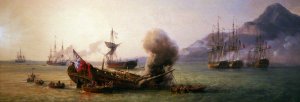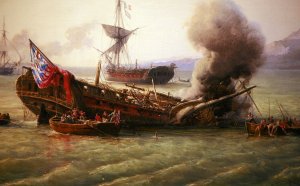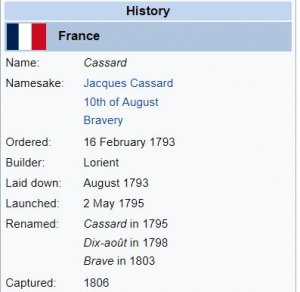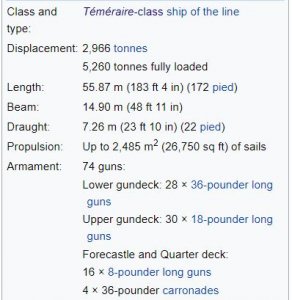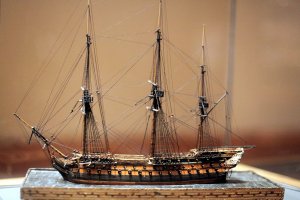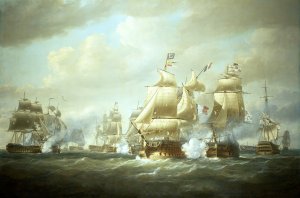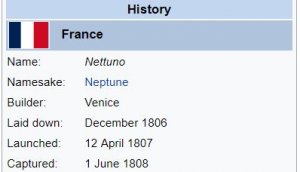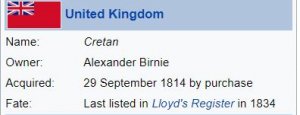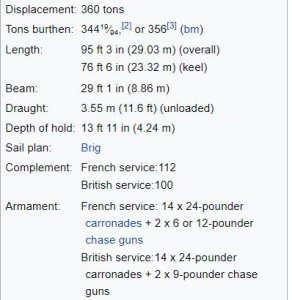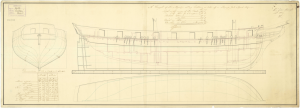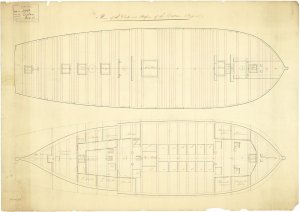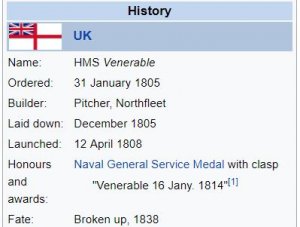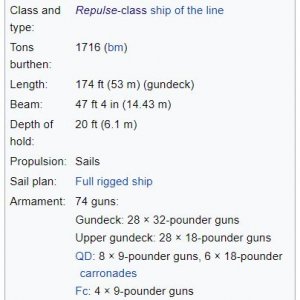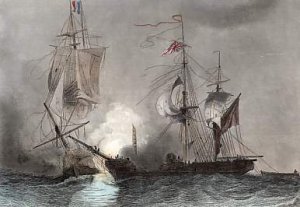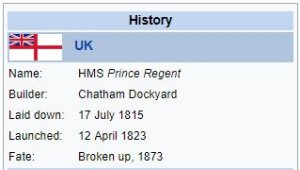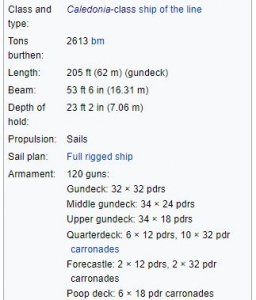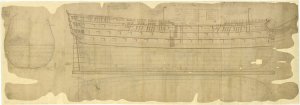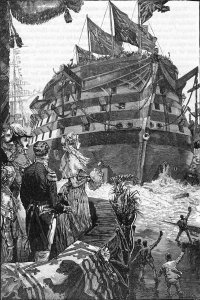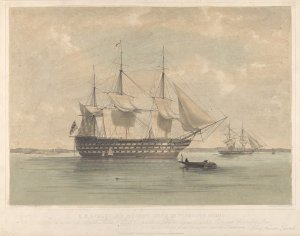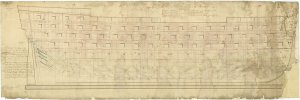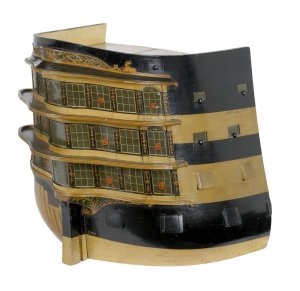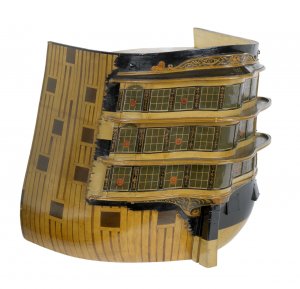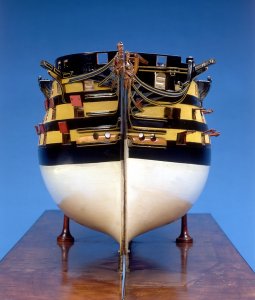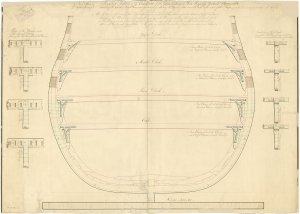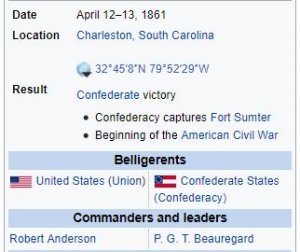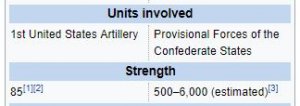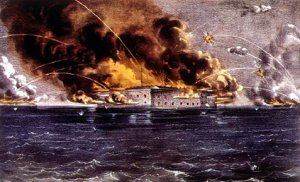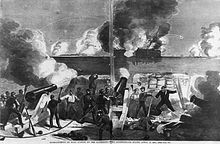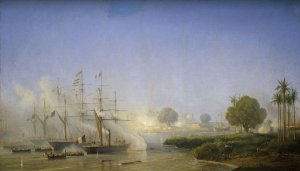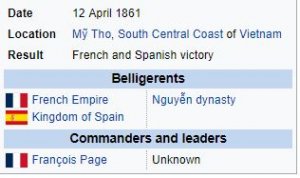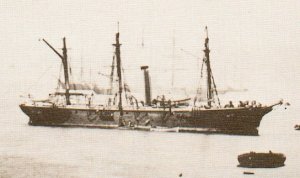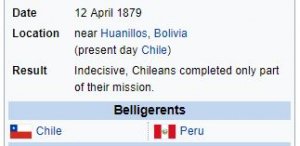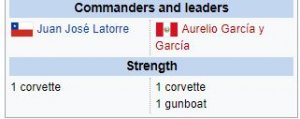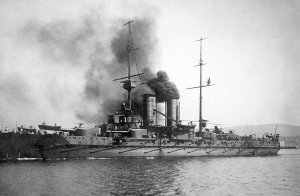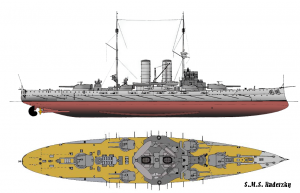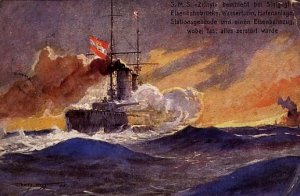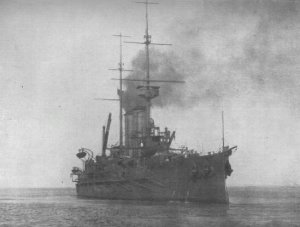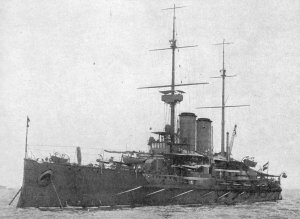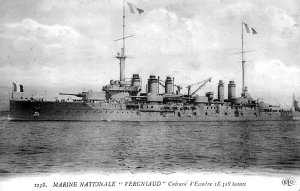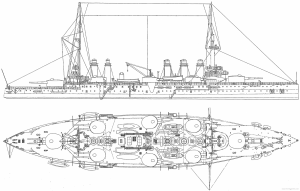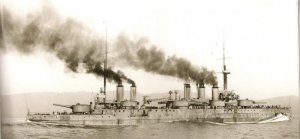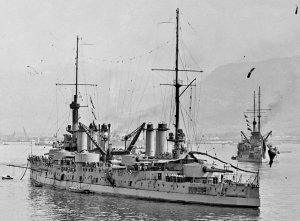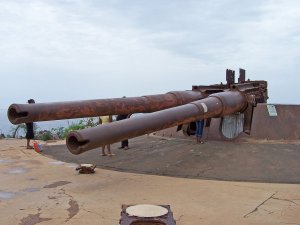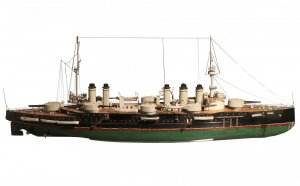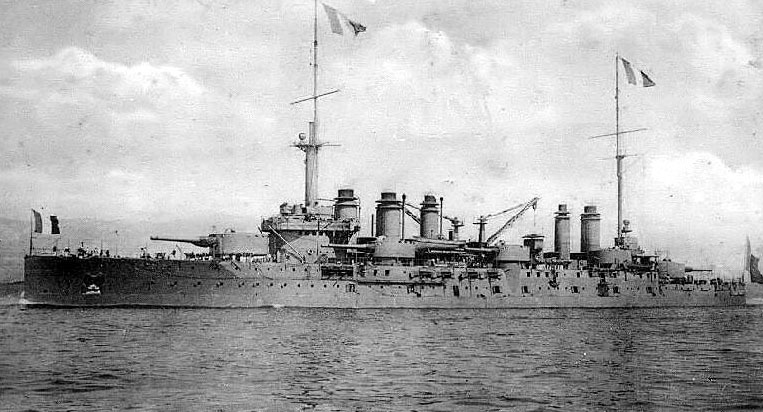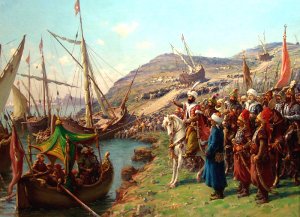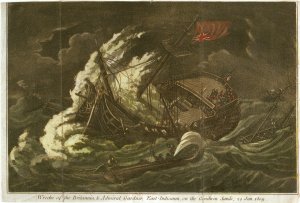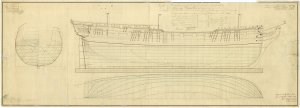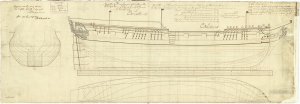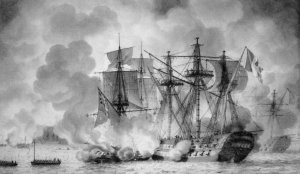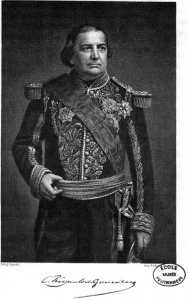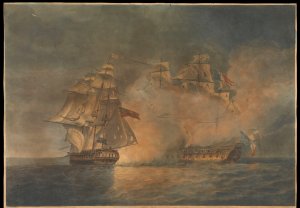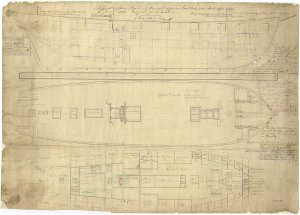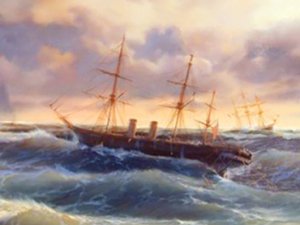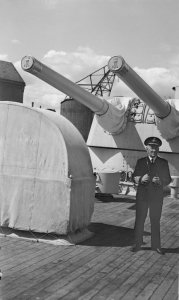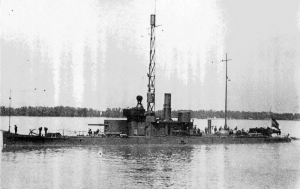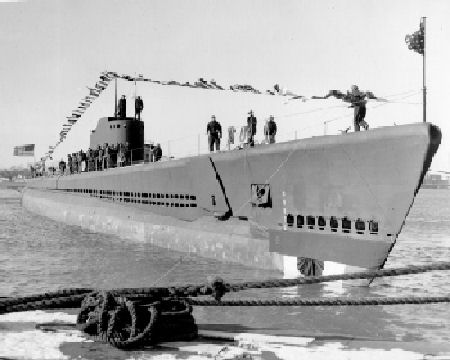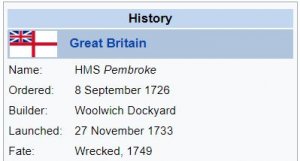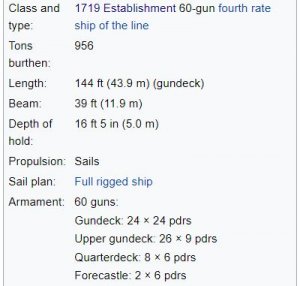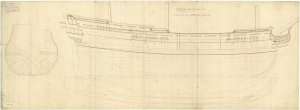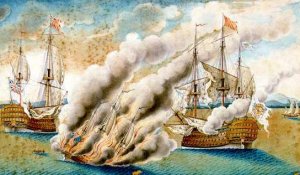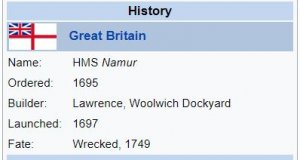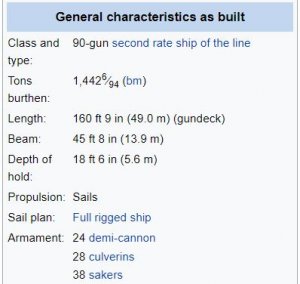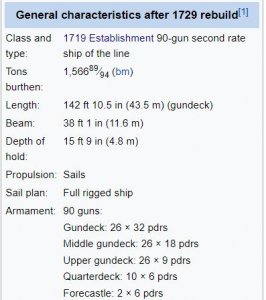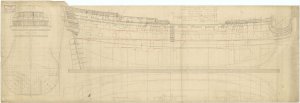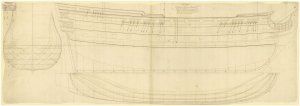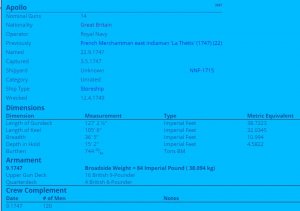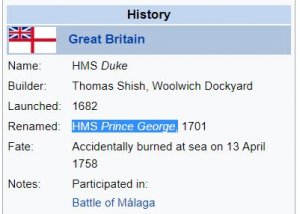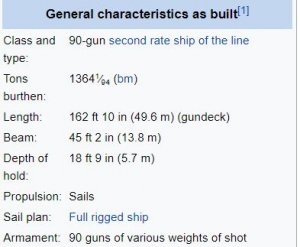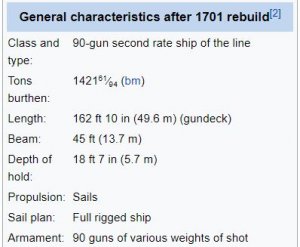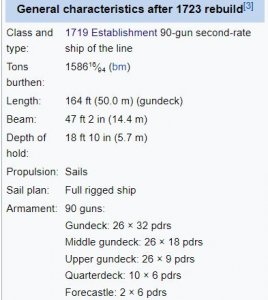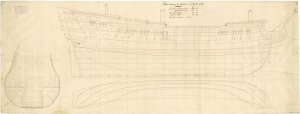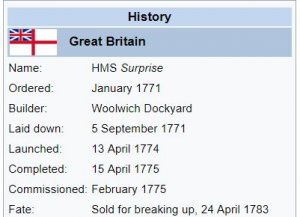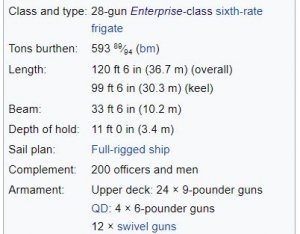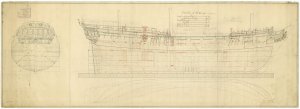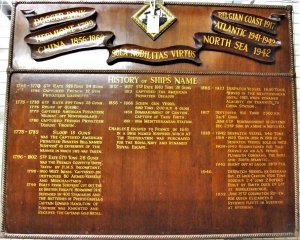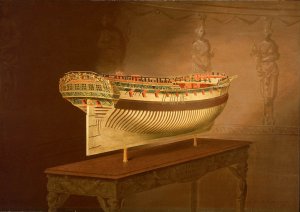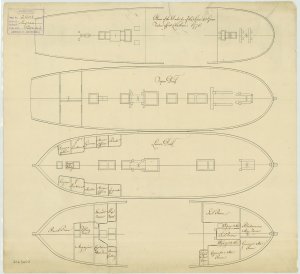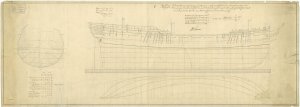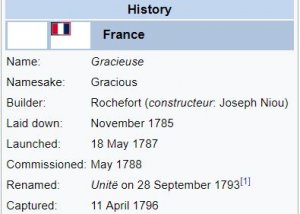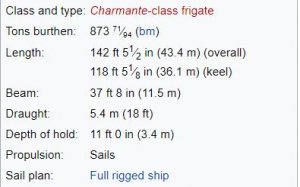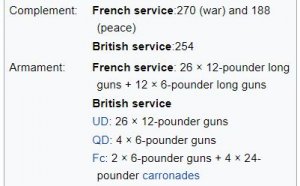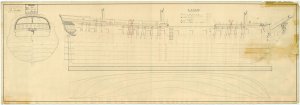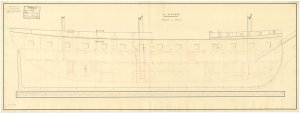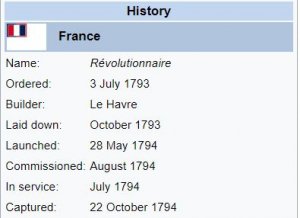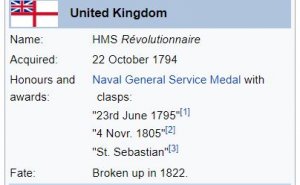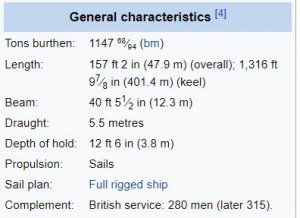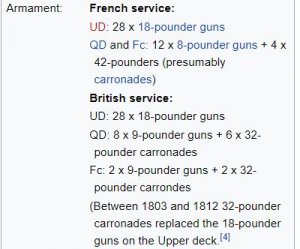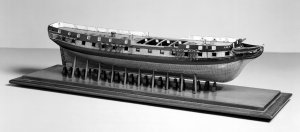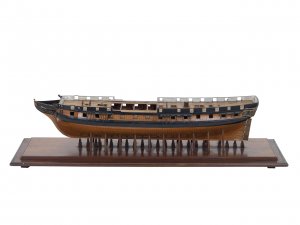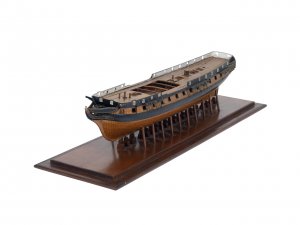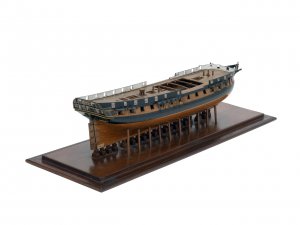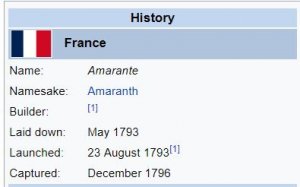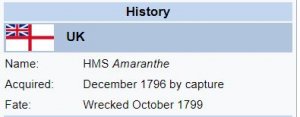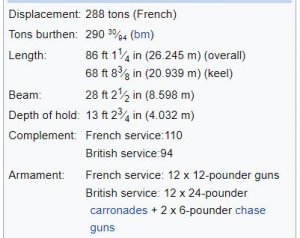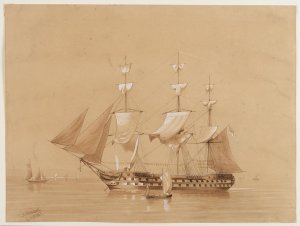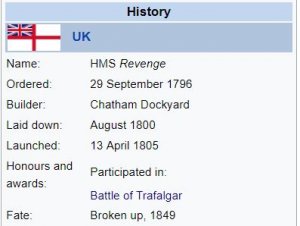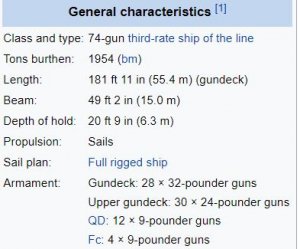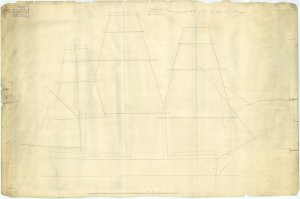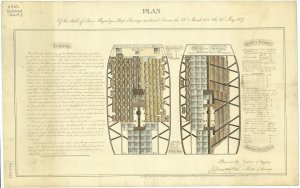Today in Naval History - Naval / Maritime Events in History
Other Events on 11 April
1669 – Launch of french Fort 68, later 76 guns (designed and built by Jean Guichard, launched 11 April 1669 at Rochefort) – renamed Foudroyant in June 1671, broken up 1690
1693 – Launch of HMS Winchester was a 60-gun fourth rate ship of the line of the English Royal Navy, launched at Bursledon
HMS Winchester was a 60-gun fourth rate ship of the line of the English Royal Navy, launched at Bursledon on 11 April 1693.
In 1695, Winchester foundered on Carysfort Reef in the Florida Keys and was lost. The remains of the wreck—now consisting of nothing more than cannonballs—were discovered in 1938 lying approximately 1.5 miles (2.4 km) southwest of the Carysfort Reef Light.
https://en.wikipedia.org/wiki/HMS_Winchester_(1693)
1728 – Launch of French Triton 60 (launched 11 April 1728 at Brest, designed and built by Laurent Hélie) - condemned 1745 and taken to pieces.
1806 – Launch of HMS Cuckoo and HMS Woodcock, both Cuckoo-class schooner of four 12-pounder carronades and a crew of 20.
HMS Cuckoo was a Royal Navy Cuckoo-class schooner of four 12-pounder carronades and a crew of 20. She was built by James Lovewell at Great Yarmouth and launched in 1806. Like many of her class and the related Ballahoo-class schooners, she succumbed to the perils of the sea relatively early in her career.
HMS Woodcock was a Royal Navy Cuckoo-class schooner of four 12-pounder carronades and a crew of 20. Crane & Holmes built and launched her at Great Yarmouth in 1806. Like many of her class and the related Ballahoo-class schooners, she succumbed to the perils of the sea relatively early in her career.
She was commissioned in 1806 under Lieutenant Isaac Charles Smith Collett. She was wrecked 13 February 1807 at Vila Franca do Campo, São Miguel in the Azores. She and her sister ship Wagtail had anchored there when a gale came up. Because of the storm it was impossible to clear the land and at 5pm Collett ran her ashore after her anchors had parted and water was continuously washing over her. Lines were passed to the shore and all her crew made it safely to land. Wagtail was wrecked three hours later.
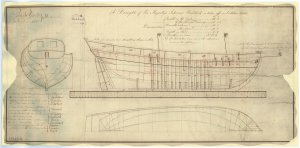
Scale: 1:48. A plan showing body plan with stern board outline, sheer lines with inboard detail, and longitudinal half-breadth of 'Haddock' (1805), a four to six gun schooner, as taken off in October 1805 and modified on her refit. This plan was used for the subsequent Cuckoo class of gun schooners (1805) consisting of 'Magpie' (1806), 'Jackdaw' (1806), 'Cuckoo' (1806), 'Wagtail' (1806), 'Woodcock' (1806), 'Wigeon' (1806), 'Sealark' (1806), 'Rook' (1806), 'Landrail' (1806), 'Pigeon' (1806), 'Crane' (1806), 'Quail' (1806).
https://en.wikipedia.org/wiki/HMS_Cuckoo_(1806)
https://en.wikipedia.org/wiki/HMS_Woodcock_(1806)
https://en.wikipedia.org/wiki/Cuckoo-class_schooner
https://collections.rmg.co.uk/colle...el-305548;browseBy=vessel;vesselFacetLetter=C
1808 – Launch of Amphitrite was a 44-gun Armide class frigate of the French Navy.
The Amphitrite was a 44-gun Armide class frigate of the French Navy.
Amphitrite, under frigate captain Trobriand, departed Cherbourg for Martinique on 10 November 1808, along with Vénus, Junon, Cygne and Papillon, under contre-amiral Hamelin. The next day, the squadron broke apart.
Amphitrite arrived at Fort de France, only to find it blockaded by the Royal Navy. She managed to slip through and reach the harbour. On 3 February, as the British attacked Martinique, the Amphitrite was scuttled to prevent her capture.
In 1960, construction work of a modern commerce harbour in Fort de France uncovered the bottom of the hull of Amphitrite. Copper sheets of the hull and other fragments were recovered and are now on display at the Service Régional de l'Archéologie.
sistership
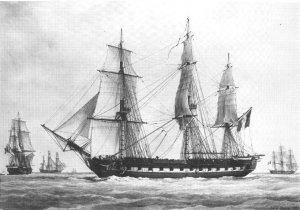
Portrait of Pénélope by François-Geoffroi Roux
https://en.wikipedia.org/wiki/French_frigate_Amphitrite_(1808)
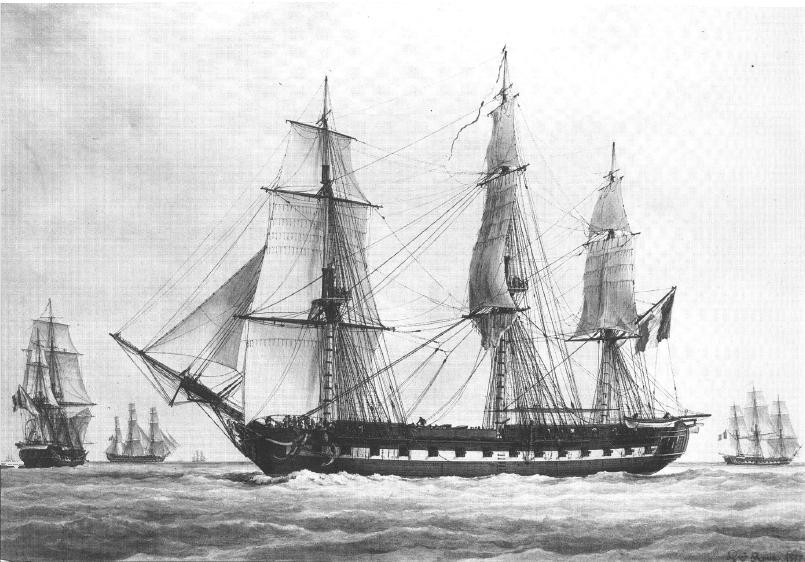
 en.wikipedia.org
en.wikipedia.org
1812 – Launch of HMS Clarence, a 74-gun third rate ship of the line of the Royal Navy, launched on 11 April 1812 at Turnchapel.
HMS Clarence was a 74-gun third rate ship of the line of the Royal Navy, launched on 11 April 1812 at Turnchapel.
Clarence was among a number of vessels that shared in the proceeds of the recapture of Wolf's Cove on 1 December 1813.
In 1826 Clarence was re-rated as a fourth rate, and was broken up in 1828.
sistership
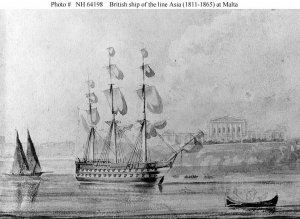
HMS Asia
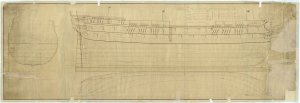
Scale: 1:48. Contemporary copy of a plan showing the body plan, sheer lines, and longitudinal half-breadth for 'Conquestadore' (1810), 'Armada' (1810), 'Vigo' (1810), 'Cressey' (1810), 'La Hogue' (1811), 'Vindictive' (1813), 'Poictiers' (1809), 'Vengeur' (1810), 'Edinburgh' (1811), 'Dublin' (1812), 'Duncan' (1811), 'Indus' (1812), 'Rodney' (1809), 'Cornwall' (1812), 'Redoutable' (1815), 'Anson' (1812), 'Agincourt' (1817), 'Ajax' (1809), 'America' (1810), 'Barham' (1811), 'Benbow' (1813), 'Berwick' (1809), 'Blenheim' (1813), 'Clarence' (1812), 'Defence' (1815), 'Devonshire' (1812), 'Egmont' (1810), 'Hercules' (1815), 'Medway' (1812), 'Pembroke' (1812), 'Pitt' (1816), 'Russell' (1822), 'Scarborough' (1812), 'Stirling Castle' (1811), 'Wellington' (1816), 'Mulgrave' (1812), 'Gloucester' (1812), all 74-gun Third Rate, two-deckers. The plan includes alterations for a rounded bow and circular stern.
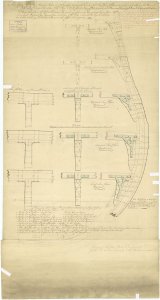
Scale: 1:16. Plan showing a part midship section for 74-gun ships, illustrating the chocks, flat iron knees, and fastenings for attaching the deck beams to the sides, and later altered in 1811. The plan was later used for 'Conquestadore' (1810), 'Scarborough' (1812), 'Stirling Castle' (1811), 'Clarence' (1812), 'Niger' (1813), 'Rippon' (1812), 'Vengeur' (1810), 'Aisa' (1811), 'Gloucester' (18712), 'Vindictive' (1813), and Unamed (to be built in Rio de Janeiro, cancelled 1809).
https://en.wikipedia.org/wiki/HMS_Clarence_(1812)
https://en.wikipedia.org/wiki/Vengeur-class_ship_of_the_line
https://collections.rmg.co.uk/colle...el-302775;browseBy=vessel;vesselFacetLetter=C
1815 – Launch of French Cybele, Pallas class, (launched 11 April 1815 at Le Havre) – renamed Remise 1850.

 en.wikipedia.org
en.wikipedia.org
1822 - Eine osmanische Flotte landet auf der Insel Chios im Ägäischen Meer und richtet ein Massaker unter den griechischen Einwohnern an. Der größere Teil der Bewohner wird in die Sklaverei verschleppt. Die einzigen, die vorläufig verschont werden, sind die Mastix-Bauern. Das Massaker ist eine Reaktion auf den Unabhängigkeitskampf aller Griechen.
https://de.wikipedia.org/wiki/Massaker_von_Chios
1823 – Launch of french Magicienne (launched 11 April 1823 at Rochefort) – deleted 29 November 1840.

 en.wikipedia.org
en.wikipedia.org
1941 Sava, Vardar and Morava – On 11 April 1941, during the Axis invasion of Yugoslavia, the crews of the three Yugoslav river monitors scuttled their vessels and were transshipped to two tugboats, one of which was destroyed after a bridge fell onto it, killing 95 of the 110 men aboard.
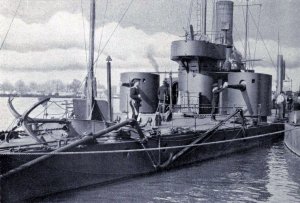
SMS Bodrog on the Danube river in 1914
https://en.wikipedia.org/wiki/Yugoslav_monitor_Sava
https://en.wikipedia.org/wiki/Yugoslav_monitor_Vardar

 en.wikipedia.org
en.wikipedia.org
2002 - the ferry MV Maria Carmela caught fire while traveling from Masbate to Quezon province. After burning for three days the ship sank off Pagbilao island in Quezon. Of those on board 44 were killed in the incident.
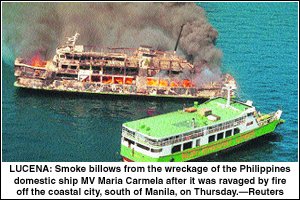
Other Events on 11 April
1669 – Launch of french Fort 68, later 76 guns (designed and built by Jean Guichard, launched 11 April 1669 at Rochefort) – renamed Foudroyant in June 1671, broken up 1690
1693 – Launch of HMS Winchester was a 60-gun fourth rate ship of the line of the English Royal Navy, launched at Bursledon
HMS Winchester was a 60-gun fourth rate ship of the line of the English Royal Navy, launched at Bursledon on 11 April 1693.
In 1695, Winchester foundered on Carysfort Reef in the Florida Keys and was lost. The remains of the wreck—now consisting of nothing more than cannonballs—were discovered in 1938 lying approximately 1.5 miles (2.4 km) southwest of the Carysfort Reef Light.
https://en.wikipedia.org/wiki/HMS_Winchester_(1693)
1728 – Launch of French Triton 60 (launched 11 April 1728 at Brest, designed and built by Laurent Hélie) - condemned 1745 and taken to pieces.
1806 – Launch of HMS Cuckoo and HMS Woodcock, both Cuckoo-class schooner of four 12-pounder carronades and a crew of 20.
HMS Cuckoo was a Royal Navy Cuckoo-class schooner of four 12-pounder carronades and a crew of 20. She was built by James Lovewell at Great Yarmouth and launched in 1806. Like many of her class and the related Ballahoo-class schooners, she succumbed to the perils of the sea relatively early in her career.
HMS Woodcock was a Royal Navy Cuckoo-class schooner of four 12-pounder carronades and a crew of 20. Crane & Holmes built and launched her at Great Yarmouth in 1806. Like many of her class and the related Ballahoo-class schooners, she succumbed to the perils of the sea relatively early in her career.
She was commissioned in 1806 under Lieutenant Isaac Charles Smith Collett. She was wrecked 13 February 1807 at Vila Franca do Campo, São Miguel in the Azores. She and her sister ship Wagtail had anchored there when a gale came up. Because of the storm it was impossible to clear the land and at 5pm Collett ran her ashore after her anchors had parted and water was continuously washing over her. Lines were passed to the shore and all her crew made it safely to land. Wagtail was wrecked three hours later.

Scale: 1:48. A plan showing body plan with stern board outline, sheer lines with inboard detail, and longitudinal half-breadth of 'Haddock' (1805), a four to six gun schooner, as taken off in October 1805 and modified on her refit. This plan was used for the subsequent Cuckoo class of gun schooners (1805) consisting of 'Magpie' (1806), 'Jackdaw' (1806), 'Cuckoo' (1806), 'Wagtail' (1806), 'Woodcock' (1806), 'Wigeon' (1806), 'Sealark' (1806), 'Rook' (1806), 'Landrail' (1806), 'Pigeon' (1806), 'Crane' (1806), 'Quail' (1806).
https://en.wikipedia.org/wiki/HMS_Cuckoo_(1806)
https://en.wikipedia.org/wiki/HMS_Woodcock_(1806)
https://en.wikipedia.org/wiki/Cuckoo-class_schooner
https://collections.rmg.co.uk/colle...el-305548;browseBy=vessel;vesselFacetLetter=C
1808 – Launch of Amphitrite was a 44-gun Armide class frigate of the French Navy.
The Amphitrite was a 44-gun Armide class frigate of the French Navy.
Amphitrite, under frigate captain Trobriand, departed Cherbourg for Martinique on 10 November 1808, along with Vénus, Junon, Cygne and Papillon, under contre-amiral Hamelin. The next day, the squadron broke apart.
Amphitrite arrived at Fort de France, only to find it blockaded by the Royal Navy. She managed to slip through and reach the harbour. On 3 February, as the British attacked Martinique, the Amphitrite was scuttled to prevent her capture.
In 1960, construction work of a modern commerce harbour in Fort de France uncovered the bottom of the hull of Amphitrite. Copper sheets of the hull and other fragments were recovered and are now on display at the Service Régional de l'Archéologie.
sistership

Portrait of Pénélope by François-Geoffroi Roux
https://en.wikipedia.org/wiki/French_frigate_Amphitrite_(1808)

Armide-class frigate - Wikipedia
1812 – Launch of HMS Clarence, a 74-gun third rate ship of the line of the Royal Navy, launched on 11 April 1812 at Turnchapel.
HMS Clarence was a 74-gun third rate ship of the line of the Royal Navy, launched on 11 April 1812 at Turnchapel.
Clarence was among a number of vessels that shared in the proceeds of the recapture of Wolf's Cove on 1 December 1813.
In 1826 Clarence was re-rated as a fourth rate, and was broken up in 1828.
sistership

HMS Asia

Scale: 1:48. Contemporary copy of a plan showing the body plan, sheer lines, and longitudinal half-breadth for 'Conquestadore' (1810), 'Armada' (1810), 'Vigo' (1810), 'Cressey' (1810), 'La Hogue' (1811), 'Vindictive' (1813), 'Poictiers' (1809), 'Vengeur' (1810), 'Edinburgh' (1811), 'Dublin' (1812), 'Duncan' (1811), 'Indus' (1812), 'Rodney' (1809), 'Cornwall' (1812), 'Redoutable' (1815), 'Anson' (1812), 'Agincourt' (1817), 'Ajax' (1809), 'America' (1810), 'Barham' (1811), 'Benbow' (1813), 'Berwick' (1809), 'Blenheim' (1813), 'Clarence' (1812), 'Defence' (1815), 'Devonshire' (1812), 'Egmont' (1810), 'Hercules' (1815), 'Medway' (1812), 'Pembroke' (1812), 'Pitt' (1816), 'Russell' (1822), 'Scarborough' (1812), 'Stirling Castle' (1811), 'Wellington' (1816), 'Mulgrave' (1812), 'Gloucester' (1812), all 74-gun Third Rate, two-deckers. The plan includes alterations for a rounded bow and circular stern.

Scale: 1:16. Plan showing a part midship section for 74-gun ships, illustrating the chocks, flat iron knees, and fastenings for attaching the deck beams to the sides, and later altered in 1811. The plan was later used for 'Conquestadore' (1810), 'Scarborough' (1812), 'Stirling Castle' (1811), 'Clarence' (1812), 'Niger' (1813), 'Rippon' (1812), 'Vengeur' (1810), 'Aisa' (1811), 'Gloucester' (18712), 'Vindictive' (1813), and Unamed (to be built in Rio de Janeiro, cancelled 1809).
https://en.wikipedia.org/wiki/HMS_Clarence_(1812)
https://en.wikipedia.org/wiki/Vengeur-class_ship_of_the_line
https://collections.rmg.co.uk/colle...el-302775;browseBy=vessel;vesselFacetLetter=C
1815 – Launch of French Cybele, Pallas class, (launched 11 April 1815 at Le Havre) – renamed Remise 1850.

Pallas-class frigate (1808) - Wikipedia
1822 - Eine osmanische Flotte landet auf der Insel Chios im Ägäischen Meer und richtet ein Massaker unter den griechischen Einwohnern an. Der größere Teil der Bewohner wird in die Sklaverei verschleppt. Die einzigen, die vorläufig verschont werden, sind die Mastix-Bauern. Das Massaker ist eine Reaktion auf den Unabhängigkeitskampf aller Griechen.
https://de.wikipedia.org/wiki/Massaker_von_Chios
1823 – Launch of french Magicienne (launched 11 April 1823 at Rochefort) – deleted 29 November 1840.

Armide-class frigate - Wikipedia
1941 Sava, Vardar and Morava – On 11 April 1941, during the Axis invasion of Yugoslavia, the crews of the three Yugoslav river monitors scuttled their vessels and were transshipped to two tugboats, one of which was destroyed after a bridge fell onto it, killing 95 of the 110 men aboard.

SMS Bodrog on the Danube river in 1914
https://en.wikipedia.org/wiki/Yugoslav_monitor_Sava
https://en.wikipedia.org/wiki/Yugoslav_monitor_Vardar

SMS Körös - Wikipedia
2002 - the ferry MV Maria Carmela caught fire while traveling from Masbate to Quezon province. After burning for three days the ship sank off Pagbilao island in Quezon. Of those on board 44 were killed in the incident.





